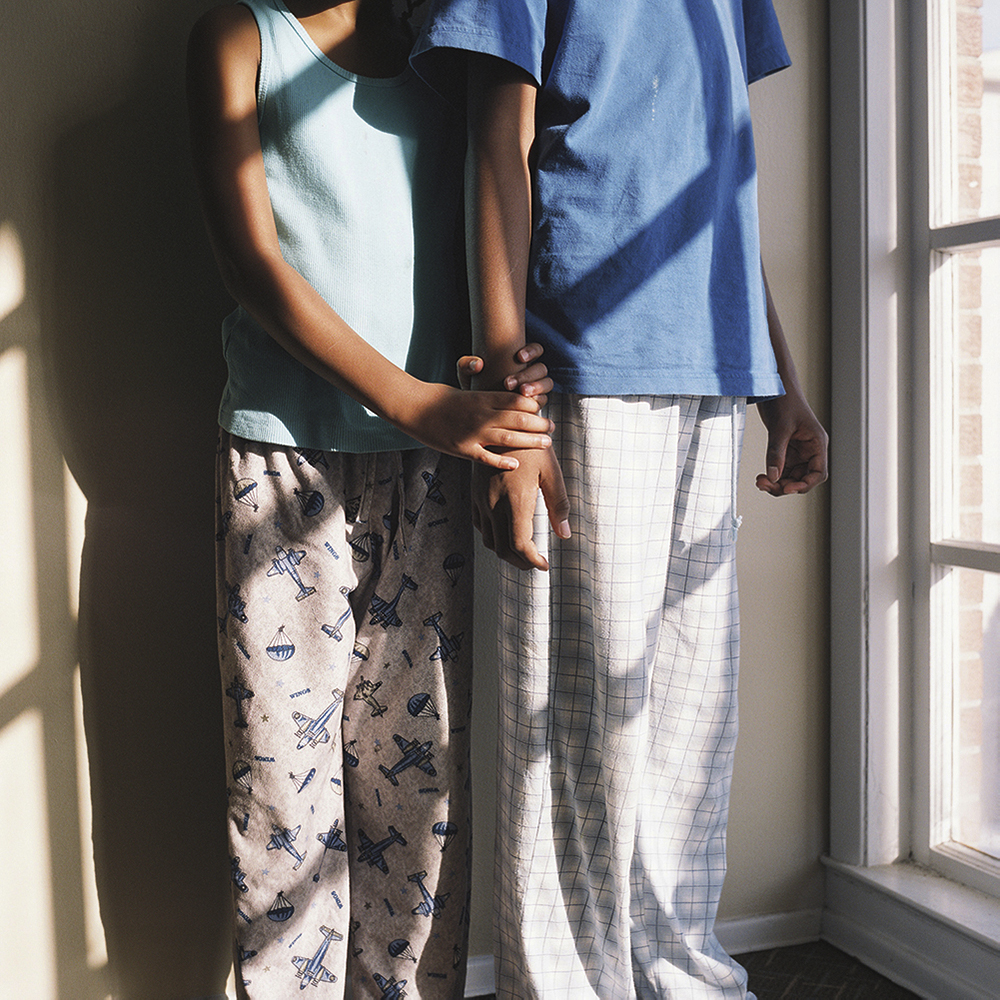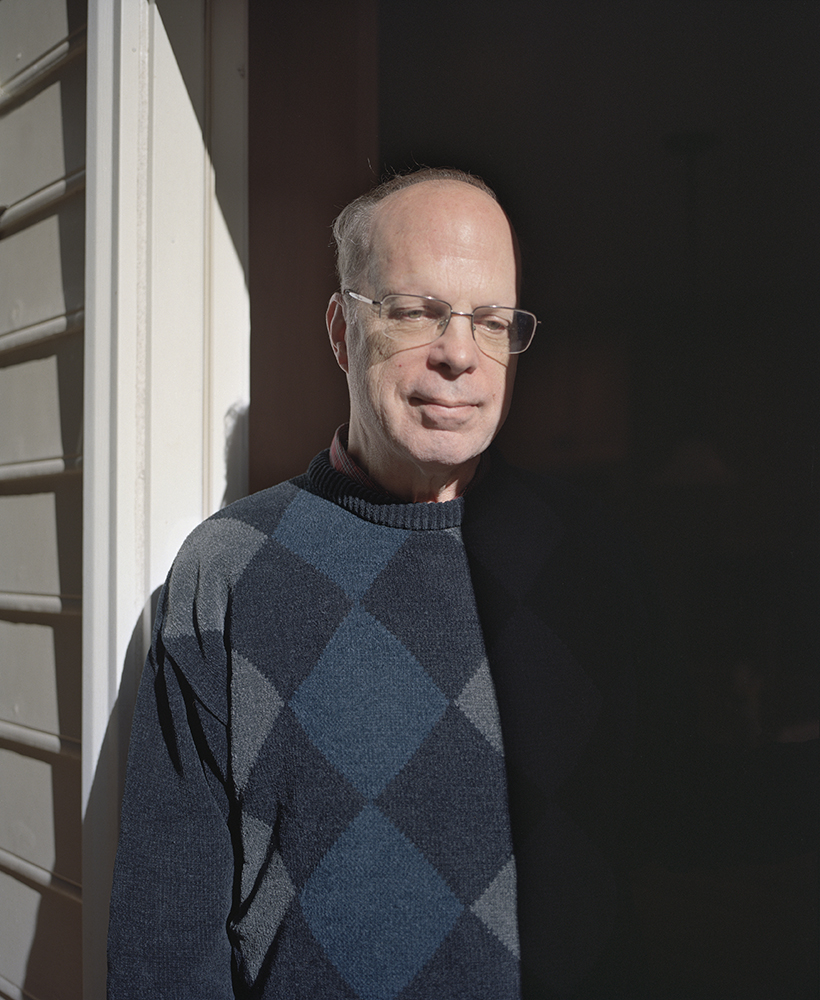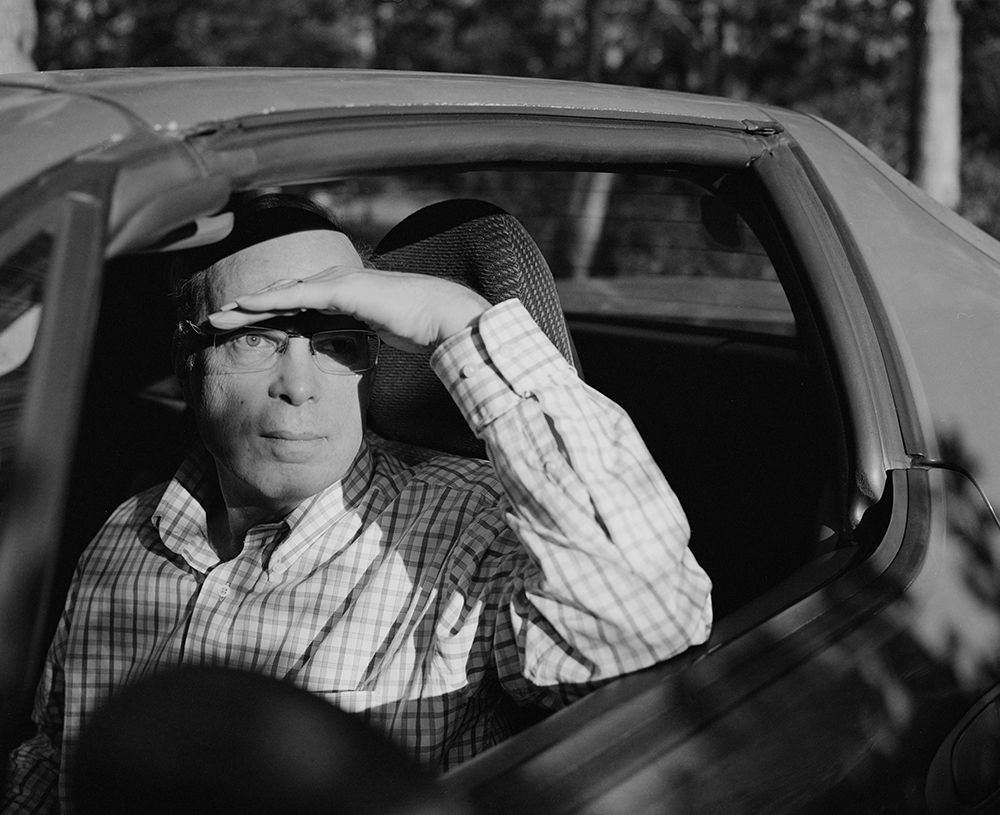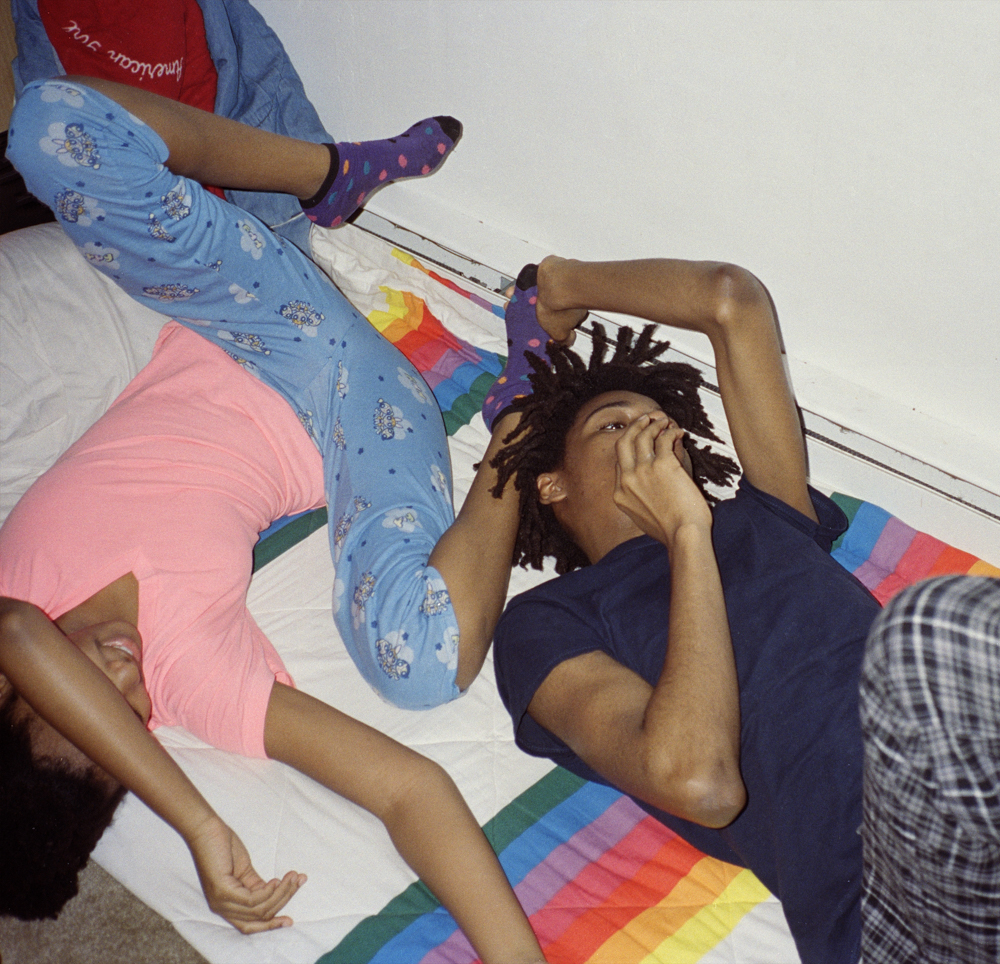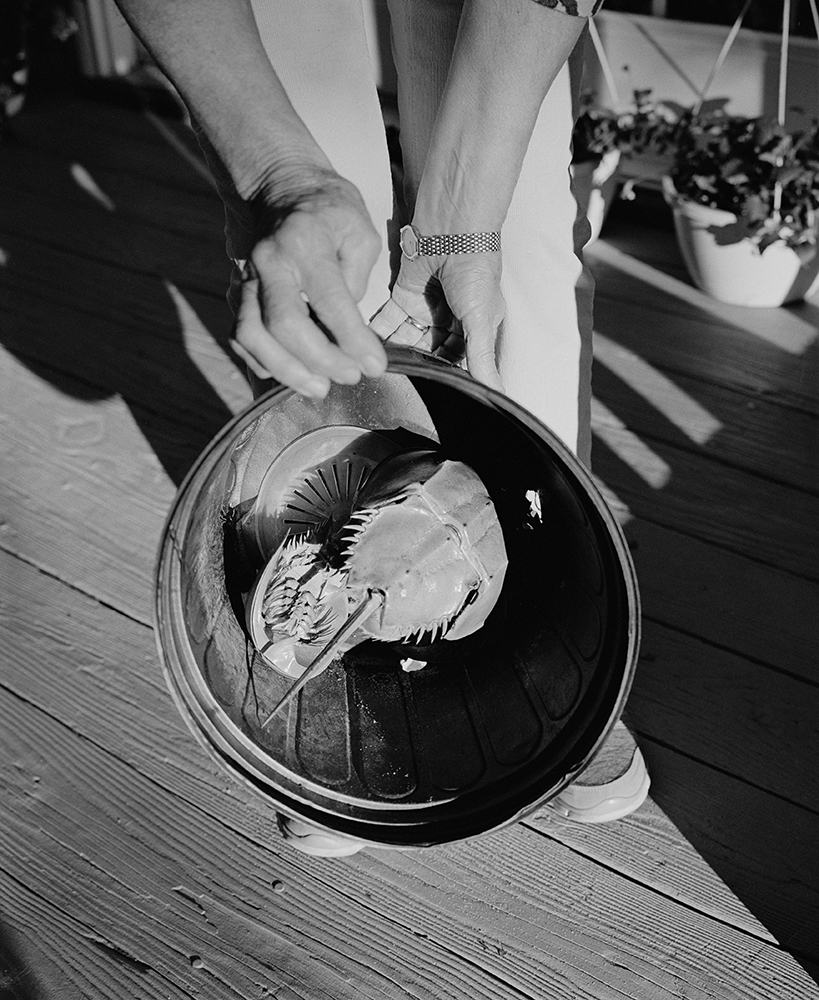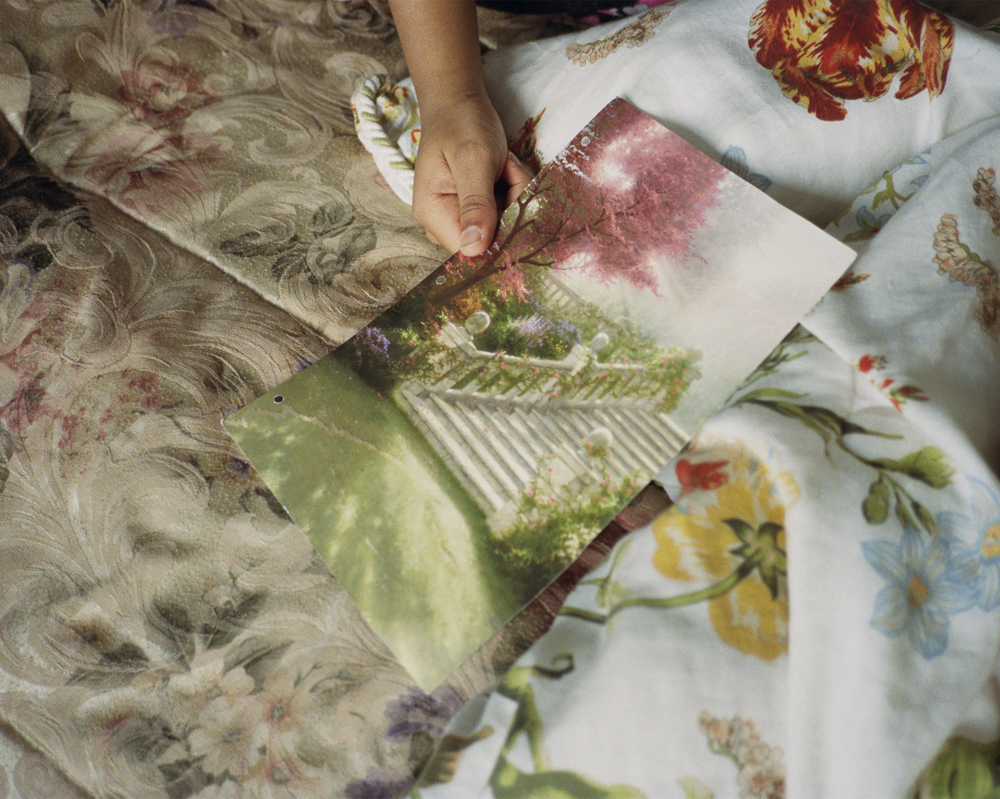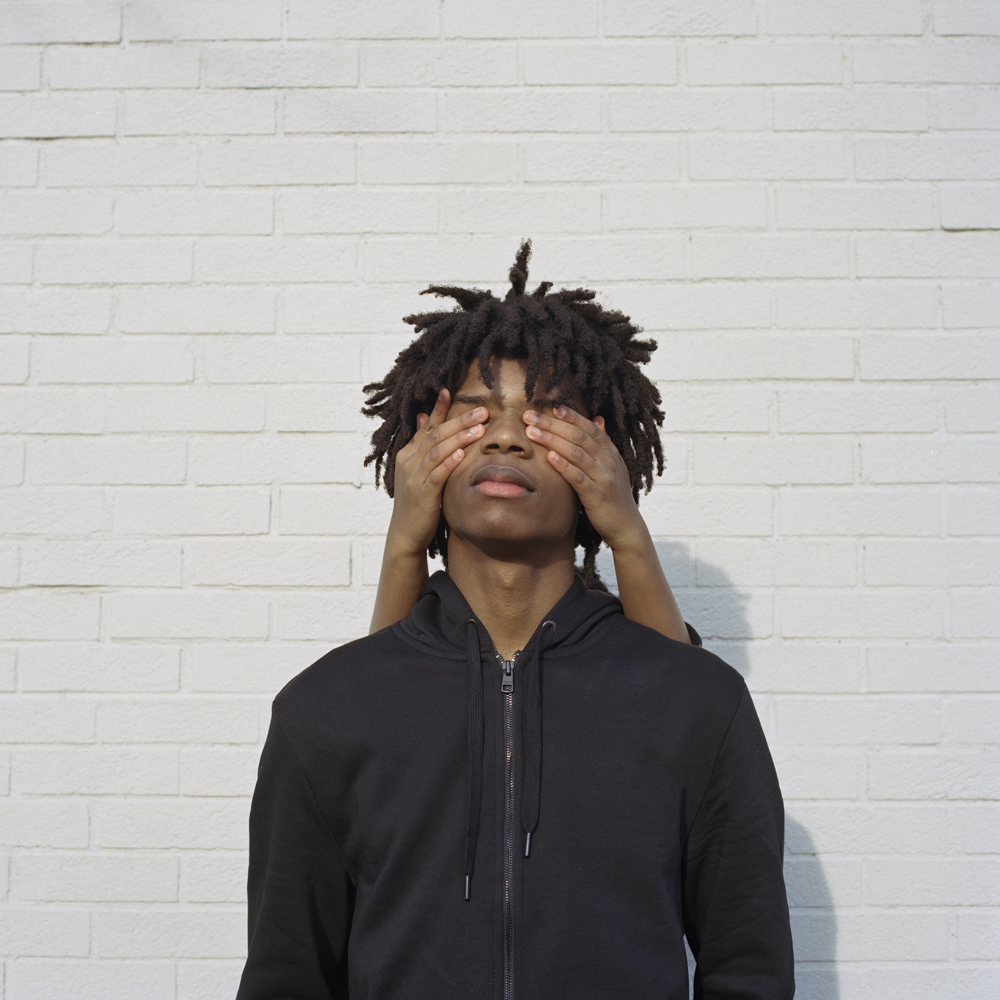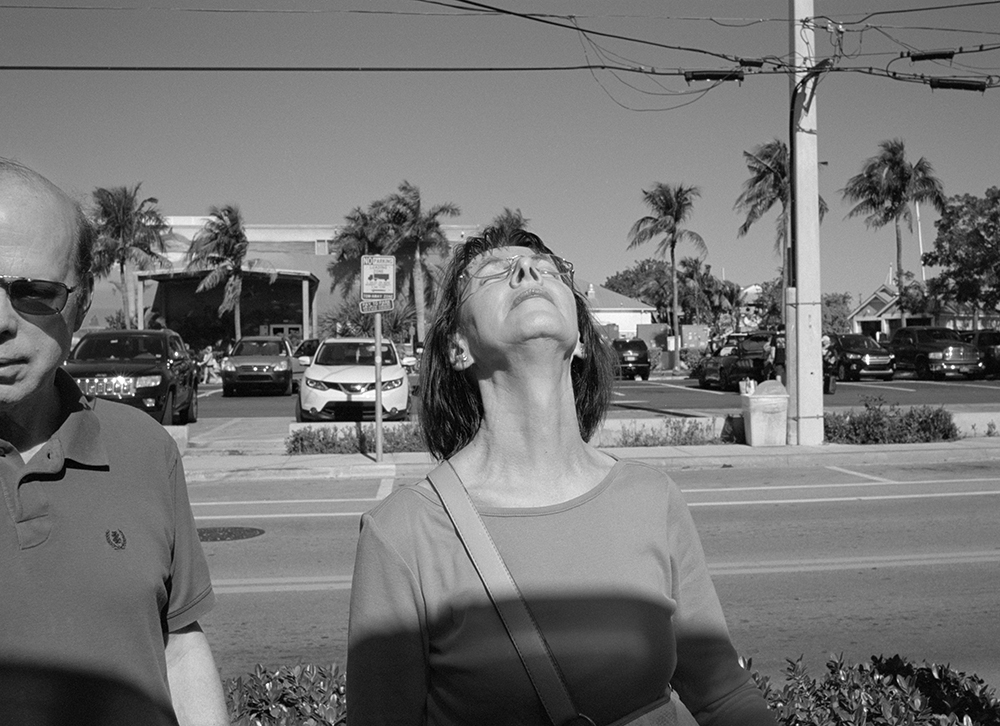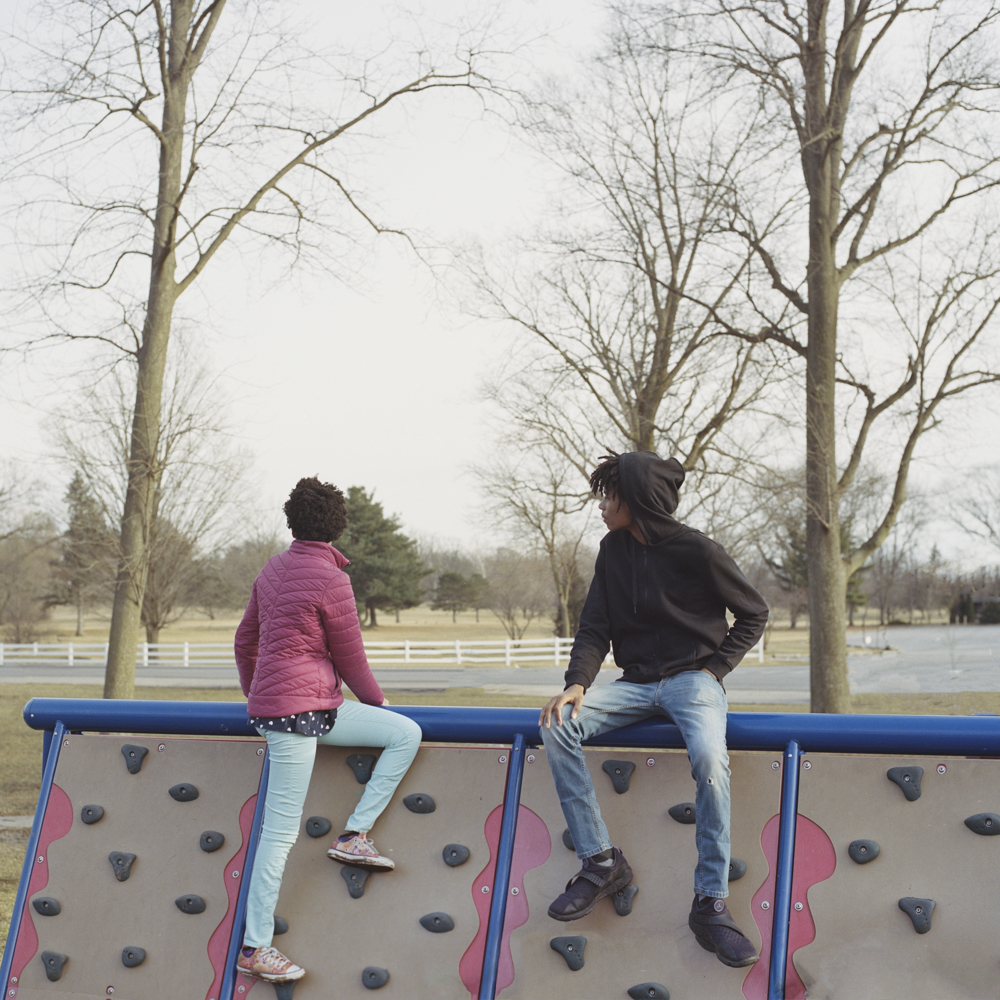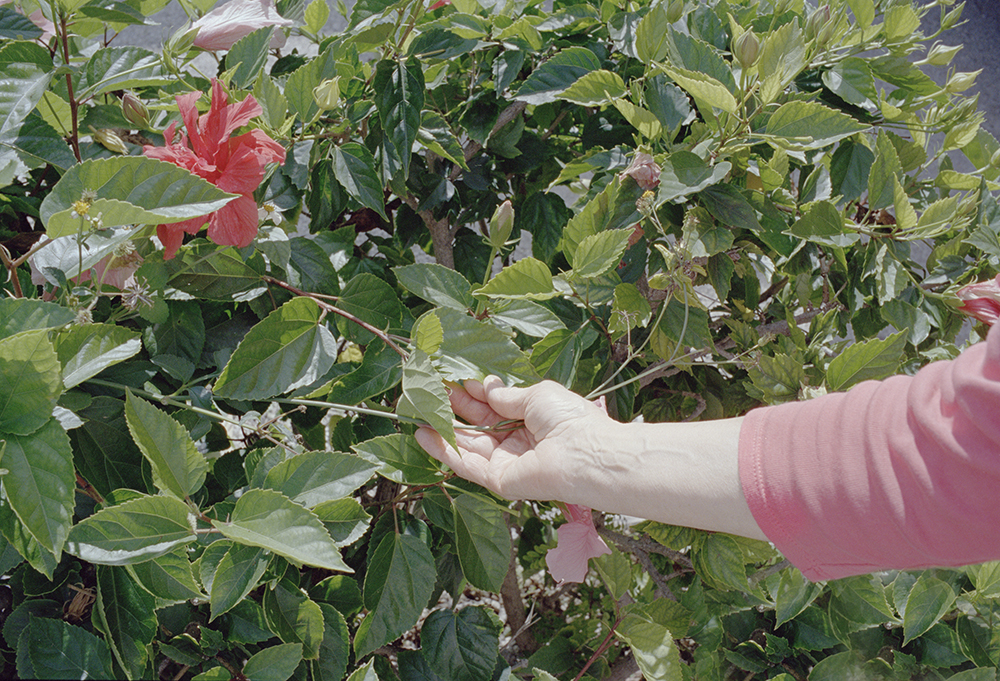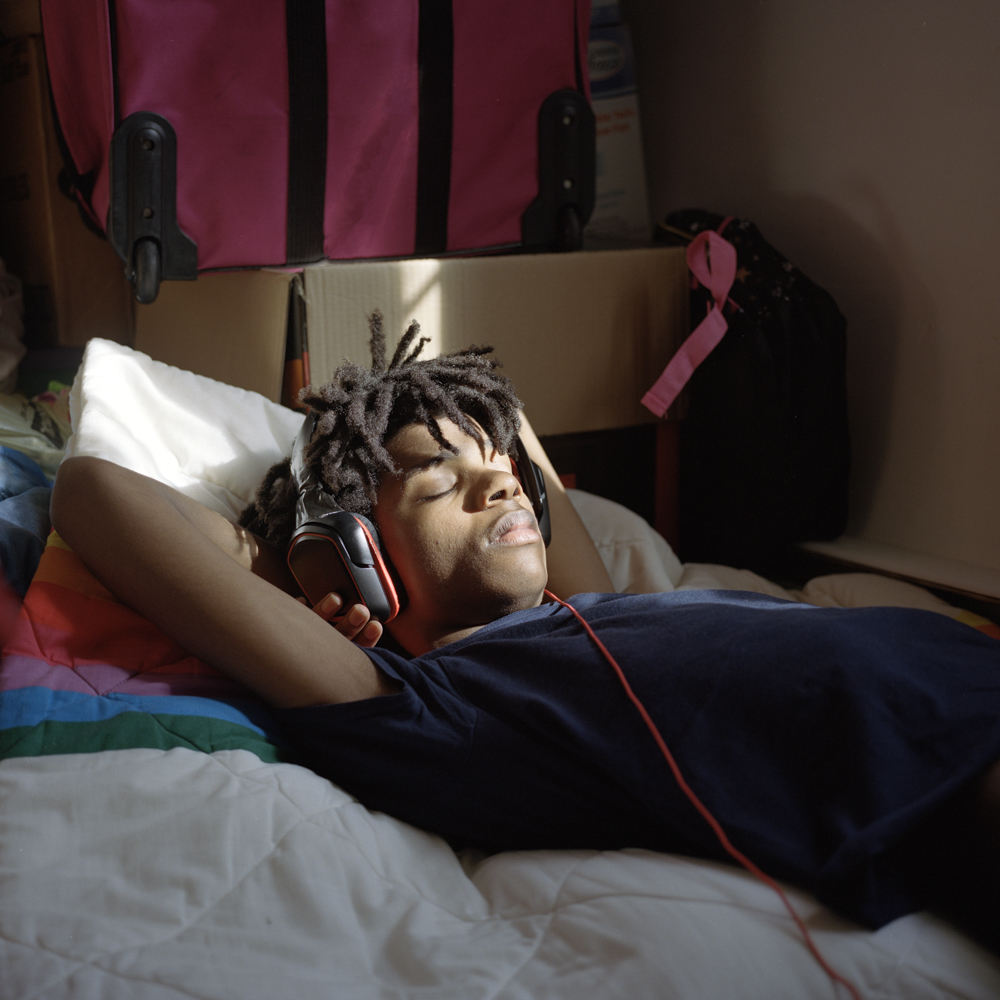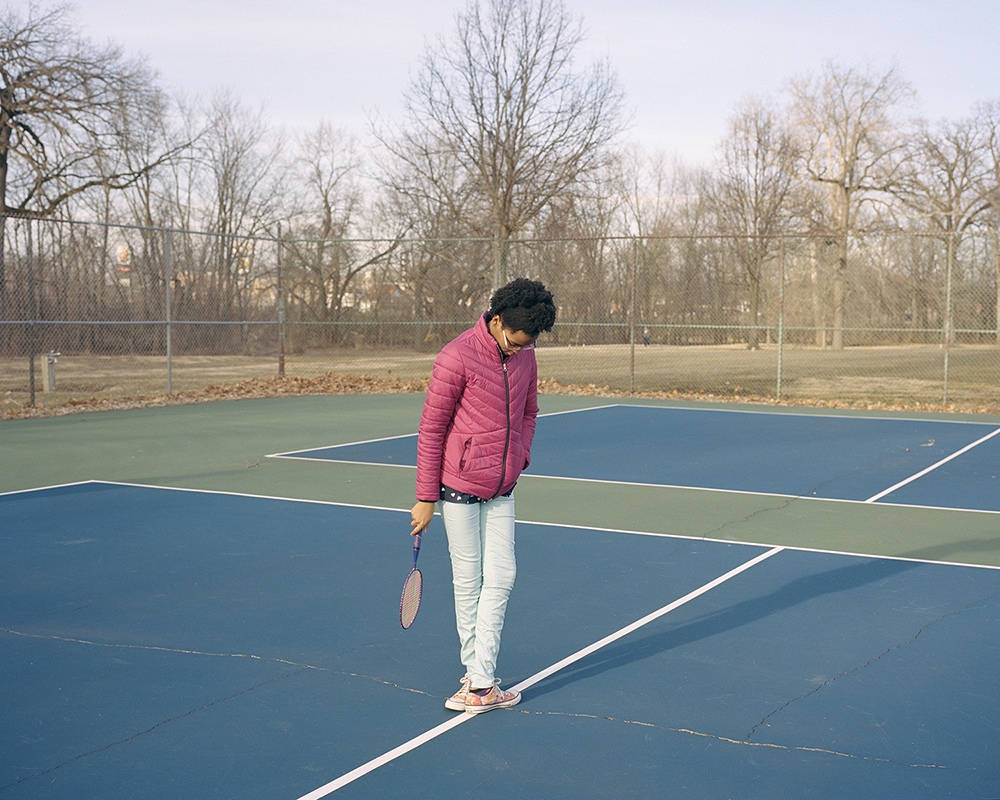Photographers on Photographers: Nadiya Nacorda and Linda Moses
This month, we feature our annual August project, Photographers on Photographers, where visual artists interview colleagues they admire. Thank you to all who have participated for their time, energies and for efforts. Today we are happy to share this interview with Nadiya Nacorda‘s interview with Linda Moses. – Aline Smithson and Brennan Booker
Linda Moses and I were destined to be friends. A mutual friend of ours from Richmond (where we both lived at the time), Jaclyn Kolev Brown, separately encouraged each of us to apply to Syracuse University, where we both ended up getting accepted and later attending. We’d met before we made our final decisions, and when I chose Syracuse I was happy to know we’d be in the same cohort. Linda is incredibly brilliant and brings so much to our group. Her background in Art History is invaluable, but beyond that she is never afraid to have the challenging, messy, and in our case, particularly emotional conversations that being an artist requires.
Linda and I further connected as we found out more about each other’s work on our families, our impractical love of using film, and our shared concern with intimacy in our photographs. Linda’s in-progress series, Incoming Call, explores her relationship with her parents as they confront their own mortality after the sudden death of her uncle. She has a particular way of placing the viewer within her own position as the daughter to her parents. I have the pleasure of being present for the development of this work and have seen more than what is public, but in many of the images we see Linda seeing her parents.
We often have open conversations about anything from our process, to our struggles in life and art. We chose to structure the interview in the manner that felt most natural, creating a space together as fellow graduate students, artists, and friends.
Nadiya Imani Loyisa Ntlabati Nacorda is a Blasian artist, photographer, and Taurus currently living and working in Syracuse, NY. She was born in Detroit, MI to a Filipinx immigrant father and a Xhosa mother. Throughout the year, she travels to photograph her immediate family, as well as her family abroad. Her work heavily draws from notions of intimacy, family, love, displacement, secrecy, and generational trauma within the context of immigrant-American family life.
Nadiya received her BFA in Photography & Film with a minor in Spanish from VCU Arts in Richmond, VA. She is currently pursuing an MFA in Art Photography at Syracuse University’s School of Visual and Performing Arts. Her work has been exhibited at the Midwest Center for Photography, the Detroit Public Library art gallery, and Candela Books + Gallery in Richmond, VA. She is also a 2019 finalist of the Magenta Foundation’s Flash Forward competition.
Linda Moses is an Italian American artist from Williamsburg, Virginia. She received her BA in Art History from the College of William & Mary in 2016, and is now pursuing an MFA in Art Photography from Syracuse University. Her artistic process is rooted in a pursuit to understand the role of photography in relation to the philosophical notion of the “everyday” within affect studies. She is currently developing a body of work about her parents, exploring the ways that a family member’s death challenges our ability to empathize with others while we confront our own mortality. Her photographs have been exhibited at the Lucie Foundation in Los Angeles and Andrews Gallery in Williamsburg, VA.
Nadiya Nacorda : What is currently inspiring you this summer? What things have been feeding you creatively?
Linda Moses: There’s something about summer and the melancholic nature of it that forces me to slow down even when I don’t want to. That slowness can feel a bit dissonant when I feel like I should make new images every week… but creatively I think the slow is so important. I’ve been able to lean into my emotions and accept them, realizing that these last few months have been heavy for me personally and to honor each moment. One thing I’ve really enjoyed hearing in grad school is that there is not one way to work- you don’t have to make images every day in order to be growing as an artist. There are endless sources of inspiration and parts of the process beyond clicking the shutter. So to answer your question, I’ve found that reading and writing for pleasure is so fueling! There’s something about words and the way people articulate their experiences that I find really clarifying. And journaling has helped me process ideas and feelings that I might address in photographs.
NN: I feel that so much, especially now during the summer months when I’m feeling the pressure to produce, produce, produce, in the most capitalistic sense of the word. Even though all I want to do it eat pizza and lie in my hammock. I feel like I’ve been having this conversation with so many artists this summer, how we can redefine what “making work” means and what that looks like beyond what society tells us. I’ve definitely been journaling a lot too and meditating like Oprah tells me (lol). I’ve also started to learn a new language this summer to play around with something new. I just discovered this researcher Stuart Brown, who studies play. How it shapes the brain, supports innovation and creativity. He argues that play is essential to our survival. I watched his TED talk and a few other lectures of his, but I ordered his book and I’m really excited to read it. I’ll let you borrow it when I’m done!
LM: Oh yes, please! That sounds great. I’m realizing more and more how important it is to try to find balance in a society that pretty much values us for our “productivity” that is outwardly visible; that has a seemingly tangible form. I’m much more interested in finding a state of working that allows me to be as honest with myself, my desires and passions in the moment, as possible. That allows play, as you mentioned! I’ve been taking a lot of inspiration from films and poetry recently. It helps me understand the relationship between image and text and sound, and when sound or text adds to images or when it falls short. I recently re-watched Terrence Malick’s Tree of Life and remembered how visually stunning, confusing, and just emotionally wild it is. In a lot of ways the scenes serve a photographic purpose; there are so many gorgeous shots in the film that seem to stand still, even when moving. That and Moonlight are films I will probably think about for a while. They make me consider the role of film in inspiring photography and vice versa. What artists have you been looking at recently?
NN: Ooo, I haven’t watched Tree of Life is so long, I might need to watch that again soon. I also end up thinking about Moonlight for a lot of reasons. I cried myself to sleep after watching it in the theater for the first time. A lot of my motivations and ideas for my work come through research and my own lived experience. Right now I’m looking at a variety of artists like Deborah Roberts, Shikeith, Hlumela Matika, Nydia Blas, Stephanie Syjuco, Leonard Suryajaya, Cynthia Henebry, Adama Delphine Fawundu, and Sadie Barnette, to name a few. I’ve also returned to reading Toni Morrison and picked up a new psychology book on the sibling bond that I’m excited about. I was in San Francisco during CAAM (Center for Asian American Media) Fest this year and I got to see a ton of short films on family by Asian American filmmakers that really moved me, as well as a new feature my Justin Chon called Ms. Purple. It really sent me on a trajectory of thinking a lot more about the sibling relationship and exploring that unique bond more within my work. As the oldest, with five siblings, it felt like a natural direction for me.
NN: Do you ever get burnt out on making photographs of the people closest to you? I struggle with this a lot.
LM: Yes, for sure. And I hate the feeling, I know we all do. Because it’s the thing we are supposed to want to do all the time! But that’s just not the way it works. And you and I are making work about our families, which requires a certain amount of intuition and collaboration. My parents don’t always want to be photographed. At first, I had this romantic idea that I could photograph them whenever I “saw” something, saying, “Don’t move!” or “Stay still while I get my camera”… Over the last year, I’ve shifted away from this style of photographing and I now try to construct images more slowly and intentionally. That way, I can schedule photo days and spend the rest of the time just living without the camera. This usually works best for my parents as well because it’s more of an officially planned thing. And also, I can only photograph them at certain times during the year anyway. How do you determine when or when not to photograph? Especially because you are living with your siblings at the moment.
NN: It’s definitely been a challenge. As of late, I’ve been so focused on just being their older sister, enjoying the summer, and taking care of them that image-making has taken a back seat. I had a realization though that I hadn’t actually sat them down and had an in-depth conversation about my intentions with the new project, A special kind of double. They’re always open to me photographing them, or rather they’ve been used to it since it’s been almost 10 years now, but this shift of focusing requires me to lean on them more than my other siblings so I want to be as open as possible with them. Now that we’ve talked more consciously, they’ve started even coming with ideas for photographs! They feel more empowered now as collaborators. They’re just as excited as I am in some ways, and the energy surrounding the work has shifted. I think it’s now going to be much more aligned with how we live our lives versus me saying, “hey, wait do that again!” and meanwhile feeling anxious like I need to get it before it’s gone. This is just like what you were saying about how you used to photograph your parents. I’m reticent to make any set claims about having figured it out, we’ll see how the rest of the summer goes. However, I feel like the key to my family work in general is to let go of what I think I want and how I want things to go. It requires a lot of trust and willingness to be flexible.
LM: That’s amazing that your siblings have started to bring their own ideas! That sounds like it could lead to really interesting directions in your work. I’m hoping to allow a collaborative elements in my project as well, and I think it will happen naturally over time. Even after photographing my parents for several weeks this summer, I noticed that they started to present a default expression for the camera. It tended to be a vacant or sad look, and I’m interested in what that means about my approach and how they might perceive my intentions. This work does deal with mortality, aging, and slowness, but I want to find a way for it to include a range of emotions, not just a sense of loss or sadness. Sometimes I wonder whether I should go back to photographing more in the moment. I’m curious – do you usually have a specific image in mind before you take a picture? And how do you move forward when the picture looks different?
NN: Most of the year, my family lives pretty far away and so when I’m here in Syracuse I’m usually overflowing with ideas for images because I have so much time in between trips. As such, I have a giant photo list that I add to all the time, but when it comes to actually making the images it gets a lot more messy. Sometimes I’ll just be living life with them and something will happen and I’ll say “Ooo! That was one of the images I want to make of Khaya holding snacks from the corner store,” then I’ll go and make that image. Most of the time though the list serves as a starting point, but I’m never too set on what the end result will be. I find that if I’m too strict with my expectations, it’ll lead to frustration. I tend to lean on my intuition when it comes to the moment, sometimes just letting my family take the lead. Intimacy and touch are also strong themes within my work, and that can be difficult to photograph in a fluid manner if I’m too set in how I want the image to turn out. When the image isn’t quite there yet, I will just go back and make it again. I’ve only done that a few times, but I actually enjoy remaking certain images. Even though it’s a remake, it will always be different in some way, which can be annoying, but I’m trying to embrace the surprises or “mistakes.” Sometimes I’ll go back and realize what I thought was a total failure actually does something I’m excited about.
NN: Can you talk about your love and relationship that you have to film and its importance to your process? I know this has been quite a topic for both of us in grad school when all our artistic decisions are being questioned, and we’re being pushed beyond our comfort zone.
LM: Ahhh, this question. I think it’s funny that we’ve had to defend this decision so much. For me, it really comes down to the fact that I became passionate about photography by using film. It really pushed me to imagine the image in its final form before clicking the shutter, so I don’t take pictures for granted. And then of course, the physical nature of film is so wonderful because of its permanence.
NN: Yeah, I’ve been surprised by this too. For me, it’s also been about the relationship I have with my cameras. I love the experience of shooting with my film cameras and haven’t been able to get the same experience with digital. I still shoot digital to sketch and play, or when I’m traveling really far, but I’m never super enthusiastic about it. It just feels different! Maybe that’s just my Taurus speaking.
LM: Film is such a sensory medium! The loading, advancing, constructing, clicking. I love it. Speaking of that physicality, how do you feel about venturing into other mediums to supplement photographs?
NN: It’s something I’m really excited about and still playing around with a lot of different ideas at the moment, but I think it’s really freeing to think about my work within a wider context beyond the photograph. Especially considering I find my own inspiration from a plethora of places. More specifically, I’ve been most excited by the idea of working with found documents, whether that be legal documents or old notes I’ve found amongst my family’s things. Even if I don’t end up using any of the things I come across, I think it’s still a valuable practice to have explored other ways of communicating incredibly complex ideas. For example, I think a lot about inherited generation trauma within my family work, and it’s like WOAH that’s a huge topic to attempt to tackle with a still photo. Now I’m doing the difficult work of asking myself if I’m reticent to try other mediums, why is that? Is it because I’m afraid of that unknown, and it makes be uncomfortable to go outside my comfort zone? Or is it because the work just “shouldn’t” go there? The answer depends on the day, but it feels good to be in it right now.
LM: Yeah, I definitely feel both fear and excitement about approaching other mediums. At the moment, I don’t have a clear idea of what that would even look like, but I don’t want to pigeonhole myself into making an image about a topic or feeling that would make more sense in video or writing or sculpture. I think I just want to stay open to what feels right as I move forward. Not force anything, but also still push myself to create in some form! I feel like I’ve learned so much about myself as an artist and person in our first year of grad school. And I wouldn’t say it’s been comfortable.
NN: Yeah……it’s been anything but comfortable. But I’m really happy with where I am, to be in this program with you and excited to just continue playing. It might just be the seduction of Syracuse summer, let’s have this conversation again in February. : )
Posts on Lenscratch may not be reproduced without the permission of the Lenscratch staff and the photographer.
Recommended
-
Aaron Rothman: The SierraDecember 18th, 2025
-
Photographers on Photographers: Congyu Liu in Conversation with Vân-Nhi NguyễnDecember 8th, 2025
-
Linda Foard Roberts: LamentNovember 25th, 2025
-
Arnold Newman Prize: C. Rose Smith: Scenes of Self: Redressing PatriarchyNovember 24th, 2025
-
Spotlight on the Photographic Arts Council Los AngelesNovember 23rd, 2025


